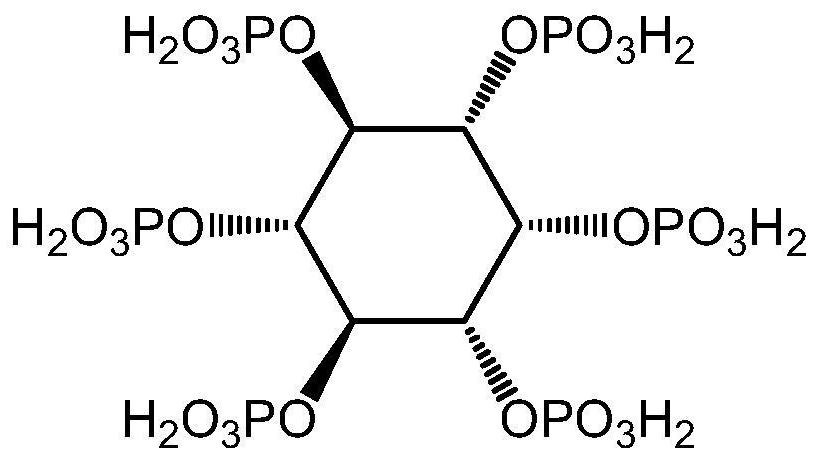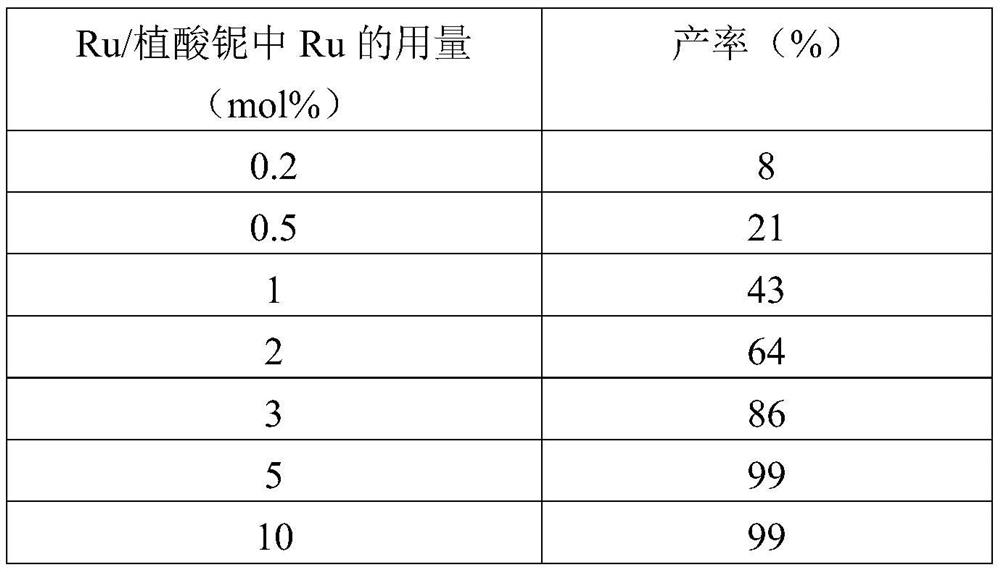A niobium phytate-supported nano-metal catalyst system for hydrogenation of levulinic acid and esters
A technology of levulinic acid and nano-metals, applied in organic compound/hydride/coordination complex catalysts, catalytic reactions, physical/chemical process catalysts, etc., to achieve high catalytic activity, good biocompatibility, and substrate adaptation strong effect
- Summary
- Abstract
- Description
- Claims
- Application Information
AI Technical Summary
Problems solved by technology
Method used
Image
Examples
Embodiment 1
[0015] 5 millimoles of levulinic acid and a catalyst (the amount of the nanometer metal catalyst is 5 mol% of the levulinic acid) were added into a 15 milliliter autoclave. After airtight vacuum degassing, filled with H 2 to 3MPa, and then reacted in a heating furnace at 60°C for 8 hours. After cooling and degassing, using n-dodecane as an internal standard, the yield of γ-valerolactone was detected by gas chromatography. When using Ru / niobium phytate, Pd / niobium phytate, Pt / niobium phytate, Au / niobium phytate as the catalyst and without catalyst, the yield of γ-valerolactone is shown in the table below.
[0016] catalyst Yield(%) Ru / niobium phytate 99 Pd / niobium phytate 12 Pt / niobium phytate 49 Au / niobium phytate 3 no catalyst 0
Embodiment 2
[0018] Add 5 mmol of levulinic acid and the catalyst Ru / niobium phytate into a 15 ml autoclave. After airtight vacuum degassing, filled with H 2 to 3MPa, and then reacted in a heating furnace at 60°C for 8 hours. After cooling and degassing, using n-dodecane as an internal standard, the yield of γ-valerolactone was detected by gas chromatography. When the amount of Ru is 0.2 mol%, 0.5 mol%, 1 mol%, 2 mol%, 3 mol%, 5 mol%, and 10 mol%, respectively, the yield of γ-valerolactone is shown in the table below.
[0019]
Embodiment 3
[0021] 5 mmol of levulinic acid and Ru / niobium phytate (5 mol%) were added into a 15 ml autoclave. After airtight vacuum degassing, filled with H 2 to 3MPa, and then reacted in furnaces at different temperatures for 8 hours. After cooling and degassing, using n-dodecane as an internal standard, the yield of γ-valerolactone was detected by gas chromatography. When the reaction temperature is 25°C, 40°C, 50°C, 60°C, 70°C, 80°C, the yield of γ-valerolactone is shown in the table below.
[0022] Reaction temperature (°C) Yield(%) 25 42 40 63 50 89 60 99 70 99 80 99
PUM
 Login to View More
Login to View More Abstract
Description
Claims
Application Information
 Login to View More
Login to View More - R&D
- Intellectual Property
- Life Sciences
- Materials
- Tech Scout
- Unparalleled Data Quality
- Higher Quality Content
- 60% Fewer Hallucinations
Browse by: Latest US Patents, China's latest patents, Technical Efficacy Thesaurus, Application Domain, Technology Topic, Popular Technical Reports.
© 2025 PatSnap. All rights reserved.Legal|Privacy policy|Modern Slavery Act Transparency Statement|Sitemap|About US| Contact US: help@patsnap.com



